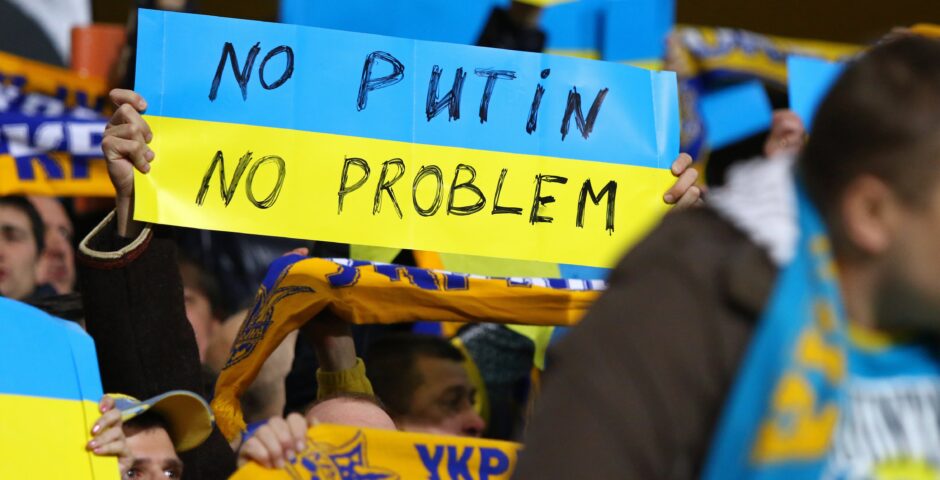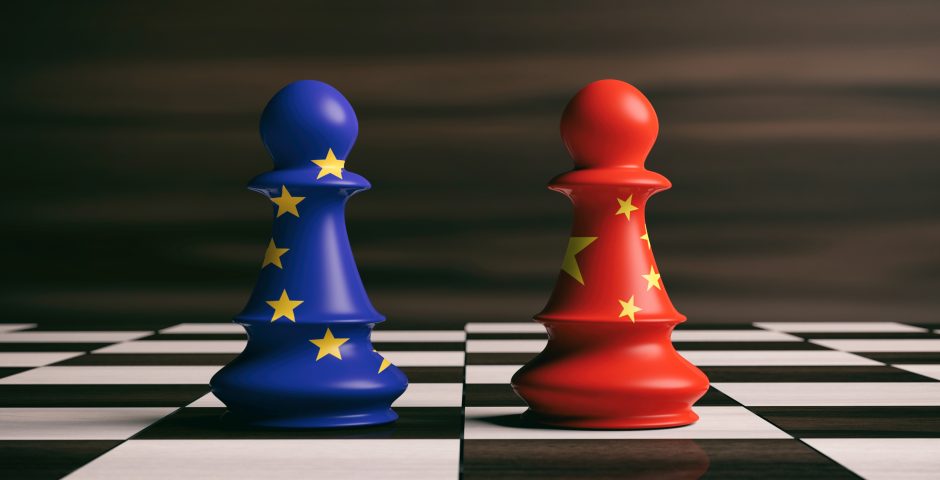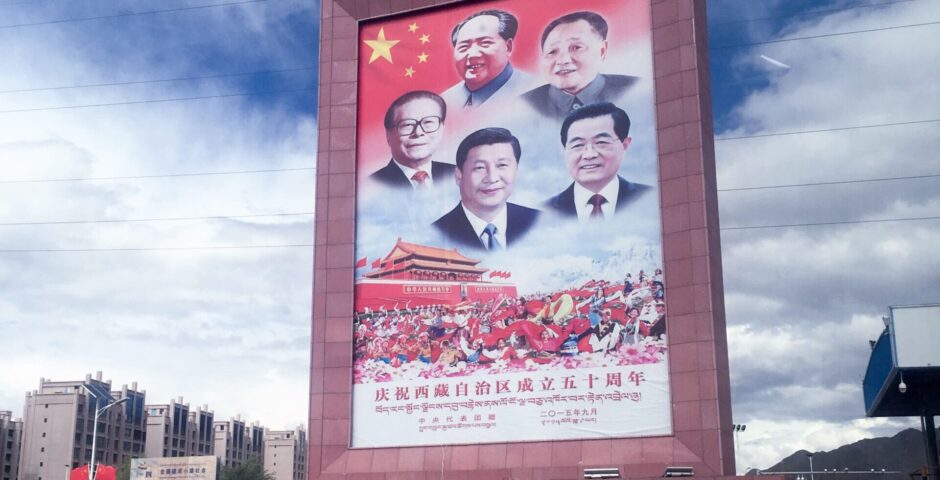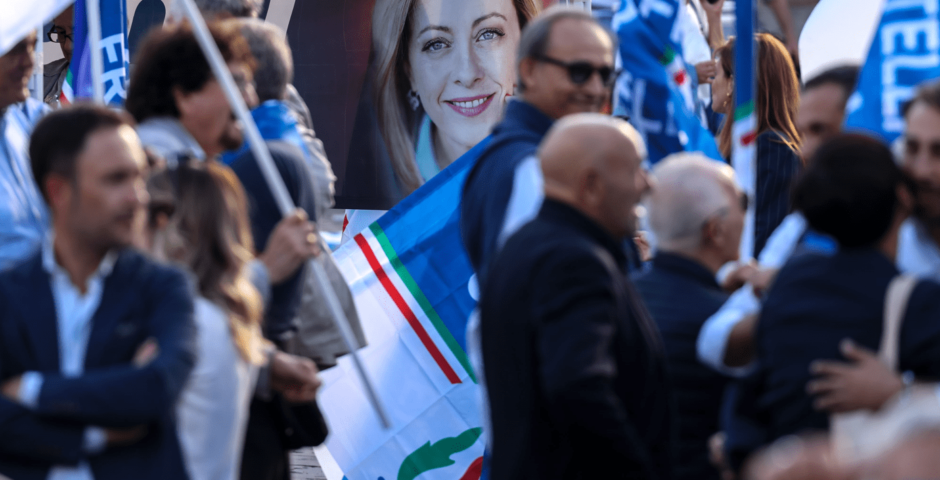From Kyiv to Moscow: How the conflict between Russia and Ukraine started

A brief overview of the Russian-Ukrainian war.
Let us take a trip back to the beginning of summer 2021: several news outlets were headlining an event that brought renewed attention to the conflict between Ukraine and Russia, but the cause for its flare-up came from a fairly unexpected place. This time, it was the world of football that acted as a stage for the long-running conflict. In the run-up to the European Football Championship, the Ukrainian national football team presented its kit, as did every other participating country. Yet Ukraine’s shirt caused quite a stir. The front of the shirt showed the outline of Ukraine, including Crimea. The shirt also featured texts, including the slogan “Glory to the heroes”, a slogan that was widely used during the Euromaidan protests in 2014. These prints did not go down well with the Russians. They filed an official complaint with UEFA, speaking of a political provocation that has no place in sports.
This article will take a look at the relationship between Ukraine and Russia and how over the years the conflict – which is now referred to as a war – came about. It will also look at the important role of the European Union in this conflict.
Shared history
While the conflict between Ukraine and Russia in its current form is relatively recent, both countries share a long history of mutual entanglement. It all began in the ninth century, when the Rus, a group of Vikings, founded the Kyivan Rus’ empire. This empire is the early predecessor of today’s Ukraine, Russia and Belarus. It existed until 1240, when it was incorporated into the Mongol Empire. As the name suggests, it was founded in the current Ukrainian capital Kyiv.
However, the history of the two countries has more points of contact. During the time of the Russian Empire, it was empress Catherine the Great who managed to extend Russian influence to, among others, today’s Ukraine and Crimea. This area was briefly taken by the Germans during the First World War, but soon the eastern part of today’s Ukraine was taken by the White Army in 1918, a diverse group of people who fought against the communist Red Army during the Russian Civil War. Finally, in 1921, the area fell into the hands of the Red Army and was formed into the Ukrainian Soviet Socialist Republic. This republic was part of the Soviet Union, which was ruled from Moscow, thus creating a new union between today’s Ukraine and Russia.
When the Soviet Union fell in 1991, Ukraine declared independence and is an independent republic to this day. In the period after the fall, the European Union sought better cooperation with the countries that were formerly part of the Soviet Union. In 1994, the EU established a Partnership and Cooperation Agreement (PCA) with Ukraine which eventually entered into force in 1998. This agreement laid the foundation for cooperation in various fields, including politics, trade, economics, energy, justice and science. In 2008, the PCA expired and the EU decided to conclude an Association Agreement with Ukraine to maintain the relationship between the two.
The times when Ukraine was under the influence of Russia and the Soviet Union have ensured that to this day a group of ethnic Russians still live there, especially in the south (including Crimea) and east of Ukraine. Because of the Soviet past, the Russian language is still the lingua franca in Ukraine. Russian even dominates the Ukrainian language in some of the southern and eastern areas. The number of ethnic Russians in Ukraine is an argument used by Russia in the current conflict. In addition, the higher concentration of ethnic Russians and Russian speakers in these areas is also one of the reasons for the outbreak of war in Eastern Ukraine. We will return to this at a later point in this article.
Euromaidan
The current tensions between Ukraine and Russia have their origins in 2012. In that year, the aforementioned “Association Agreement between the European Union and Ukraine” was first proposed. It sought to maintain ties between the country and the EU after the expiry of the PCA. The signing of the Association Agreement by the parties would mean, among other things, that the EU Member States and Ukraine would cooperate and coordinate economic, legislative and regulatory policies.
The then president of Ukraine, Viktor Yanukovych, initially supported the treaty, as did opposition supporters. However, eight days before signing the Association Agreement, Ukraine suspended the negotiations. At the time the Ukrainian opposition claimed that Yanukovych and his government had not stopped the negotiations of their own accord, but had made this decision under pressure from Russia. On the same day, 21 November 2013, protests began in the centre of Kyiv on Independence Square (Maidan Nezalezhnosti), targeting the government of Yanukovych following the suspension of negotiations. The people who took to the streets demanded a more European orientation for the country and were looking to oust Yanukovych to trigger early elections. However, Yanukovych’s party preferred close cooperation with Russia and not with the European Union.
In January 2014, the purpose of the demonstrations changed. Where previously it was primarily a pro-EU protest, from this time on it became strongly anti-government. This change was mainly due to the anti-demonstration law that Yanukovych introduced at the end of January. In it, the right to freedom of expression, freedom of assembly and the right to protest were restricted. In February of 2014, there was another upheaval. On the 18th of that month, a protest on Independence Square in Kyiv ended in a violent confrontation. Twenty-five people were killed and some 400 injured.
This event marked the beginning of a series of changes in the country that brought about an administrative revolution. During this troubled time, negotiations took place between EU representatives and Yanukovych. On 21 February, an agreement was reached stipulating that early presidential elections should take place, no later than December 2014. However, the demonstrators on Independence Square did not think this went far enough: they demanded for Yanukovych to resign immediately. Yanukovych fled Kyiv, but was still deposed by the parliament on 22 February. A few days later, on the 27th of February, an interim government led by former Economy Minister Arseniy Yatsenyuk was formed. On 21 March 2014 the Association Agreement between the EU and Ukraine was finally signed.
The Crimean crisis
Unfortunately, the appointment of the interim government and the eventual signing of the Association Agreement did not mean a return to peace in Ukraine. On the same day as the formation of the interim government, armed people occupied the parliament building in Simferopol, a city on the Crimean peninsula. Two airports and a building of the Ukrainian state television on the island were also occupied. When they raised the Russian flag, it was clear who these people were: covert Russian military. A few days earlier, on 24 February 2014, the then Russian Prime Minister Dmitry Medvedev had announced that Russia would not recognise the ousting of President Yanukovych. In addition, he was concerned about the lives of Russians and Russian interests in Ukraine which he considered to be at stake
On 11 March 2014, the independence of Crimea was declared. Following this declaration a (internationally contested) referendum was held in which the people of Crimea would be allowed to indicate whether they wanted to join Russia. According to Russian President Vladimir Putin, the turnout was 82% of which a good 96% voted to join Russia. In his annual speech in the Kremlin, Putin explained this supposed enthusiasm on the basis of the close relationship that Russia and Crimea have had for so long. According to Putin, Russia and Crimea are both a “unique blend of different peoples’ cultures and traditions”. As mentioned earlier, Russia also uses the argument that many ethnic Russians live in the east and south of Ukraine. In his speech, Putin therefore emphasized the fact that of the 2.2 million people living in Crimea, 1.5 million are Russian and that the remaining population, Ukrainians and Crimean Tatars, would mainly “lean” towards Russia rather than Ukraine.
In his speech, Putin was able to articulate nicely why the population in the Crimea chose to join Russia and thus put forward the referendum as a legitimate reason for Russia to take over Crimea. The peninsula is also of strategic importance for Russia: the base of the Black Sea Fleet, a strategically final part of the Russian navy, is located in Crimea’s capital of Sebastopol . With Crimea under Russian control, the country would also have full control over the Kerch Strait (a passageway between the island and the Russian coast that connects the Sea of Azov with the Black Sea). If Ukraine were to move away from Russia and towards Europe, Russia’s strategic interests in Crimea could be jeopardised. On 18 March, the day of Putin’s speech, it was officially announced that Crimea had been annexed by Russia. It is worth noting that outside of Russia this annexation has to this day only been recognised by Belarus.
The war in Eastern Ukraine
After Yanukovych was deposed and Russia occupied Crimea, protests erupted in Eastern and Southern Ukraine, areas known to be pro-Russian. In the Donetsk and Luhansk oblasts (regions), these protests escalated into armed conflict. On 6 April 2014, rebels occupied several government buildings and Ukraine deployed the army in response. Both the cities of Donetsk and Luhansk and the area southeast of these cities up to the Russian border were taken by the rebels. On 12 May the Donetsk People’s Republic and the Luhansk People’s Republic were proclaimed. The purpose of proclaiming the people’s republics was to eventually annex these areas to Russia, just like Crimea, but this has not yet happened. The rebels have, however, been supported by Russia all along, again on the grounds that a large Russian minority lives in these areas and needs to be protected.
What followed was a war that is still active to this day. A ceasefire was agreed several times, but each time the agreement was broken. In 2015, the UN estimated that at least 6,000 people had died in the war. Internationally, the disaster of the Malaysia Airlines plane, better known as flight MH17, is seen as one of the low points of the conflict. On 17 July 2014, a passenger plane was shot down over the village of Hrabove in the Donetsk oblast resulting in the deaths of all passengers aboard. It is now known that this aircraft was shot down by an anti-aircraft missile used in the war.
As recently as April this year, the armed conflict in the border area between Ukraine and Russia threatened to flare up again when it became known that Russia had sent as many as 150,000 troops to the border. EU foreign chief Josep Borrell said that this development was very worrying, adding that a single “spark” could lead to escalation. Ukrainian Foreign Minister Dmytro Kuleba called on the EU to impose new sanctions against Russia on top of those already in place since 17 March 2014. At the end of April, however, the Russians announced the withdrawal of troops, which got back at their permanent bases by 1 May at the latest. This brief provocation was supposed to be mainly aimed at testing the NATO countries: how would they react if Russia escalated the conflict with Ukraine? A response followed quickly: President Joe Biden announced that the US would stand by Ukraine and the British even sent warships to the Black Sea.
No end in sight
The conflict between Ukraine and Russia does not look like it will be over anytime soon. As long as the war in Eastern Ukraine rages and continues to be supported by Russia, rapprochement is extremely unlikely, at least in the near future. The conflict also has a major impact on relations between Russia and the West, including the EU. There are still EU sanctions against Russia and Crimea, and these have recently been extended. The example of the Ukrainian European Championship shirt is a good illustration of the continuing hostility between the two countries. But, what happened to the shirts? Eventually the UEFA agreed with Russia and ordered Ukraine to change the shirts in a way that would not be “provocative”. This only applied to the aforementioned slogan, by the way. The outline of Ukraine including Crimea remained on the shirts they played in until the team was sent home by England in the quarter-finals.
Esmee Slutter studied History at Radboud University and specialised in European cultural history. At the moment she is working on her bachelor’s degree in Russian Studies at Leiden University.
Image: Shutterstock




